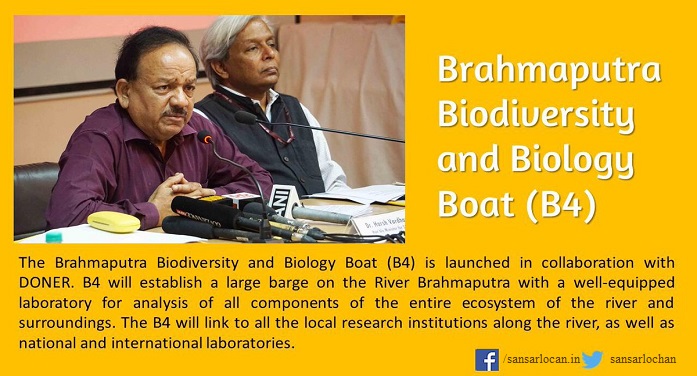Majuli Island is located in Assam and is called Asia’s largest river island and considered as a major ecology hotspot. It is the first island district of India and is famous for its Vaishnaw monasteries. It was once 1200 square kms. in area. But because of erosion its area has shrunk to less than 500 square kms. In other words, the island’s area has reduced by more than half of the original area. The Government of India’s Dept of Biotechnology (that comes under the Ministry of Science and Technology) proposes to carry out research on erosion through laboratory boats. Such laboratory has been termed B4 that is Brahmaputra Biodiversity and Biology Boat.

What causes erosion on Majuli Island?
Come let us know the factors which cause soil erosion. The most common factors are water and wind movements. Water flowing to ground carries away soil with it. During rain the soil particles, weathered rock and other organic materials are detached by rain. These soil particles are carried away by the running water.
As we said earlier, Majuli was almost 1200 sq Km in the late 19th century. Not it is barely 500 sq Km in size. Eriosion by Brahmaputra is the biggest threat to the existence of Majuli. To protect it, local people are also trying to plan trees. The trees act as flood barriers. Over 25 villages have been washed away in the past 25 years. If no steps are taken, Majuli may not exist 20 years from now.
Objectives
B4 full form is Brahmaputra Biodiversity and Biology Boat. The Brahmaputra Biodiversity & Biology Boat (B4) project has been launched in collaboration with ministry of DONER (Development of North Eastern Region). Laboratories of B4 is capable of analyzing soil, water, animal life etc. B4 will have a teaching laboratory for school/college of students.
Research on B4
The initial research will start by December 2017 and cover Pasighat, Dibrugargh, Neemati, Tejpur and Guwahati. The department of Bio-technology has initially provided Rs. 50 crore for the project. The laboratory in question will be set up on a large boat as well as several satellite boats capable of venturing into the shallower and narrower parts of the river and lifting samples for research. These boats will be equipped with powerful research mechanism which will be connected with all the local research institutions along the river Brahmaputra, as well as national and international laboratories.
